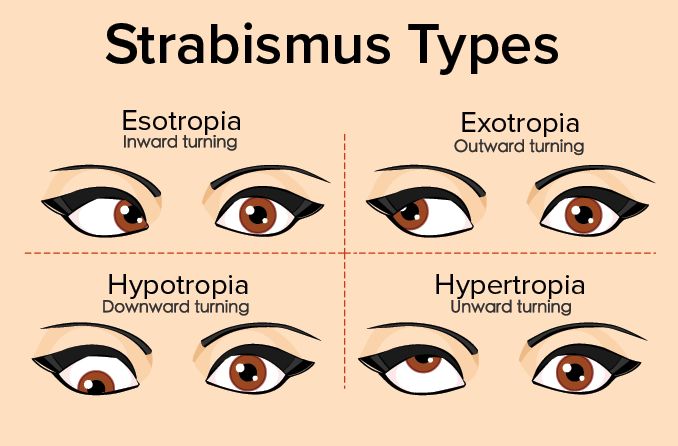What are the symptoms of strabismus?
Strabismus, often referred to as crossed eyes or squint, is a condition where the eyes do not properly align with each other. Symptoms of strabismus can include:
- Misalignment of the Eyes: One eye may turn inwards, outwards, upwards, or downwards compared to the other eye. This misalignment can be constant or intermittent.
- Double Vision: Seeing two images of a single object, which occurs when the eyes are not properly aligned and send different images to the brain.
- Eyestrain: Discomfort or strain in the eyes, particularly when trying to focus on a single object or during activities that require visual concentration.
- Difficulty with Depth Perception: Problems with judging distances or the three-dimensional relationship between objects, which can affect tasks that require precise visual coordination.
- Abnormal Head Position: Tilting or turning the head to try to correct the misalignment or compensate for the lack of depth perception.
- Eye Fatigue: Feelings of tiredness or discomfort in the eyes, especially after prolonged use.
- Eye Closure: Frequently closing one eye, particularly in bright light or when focusing on something, as a way to avoid double vision or discomfort.
If you notice any of these symptoms, especially in a child, it is important to consult with an eye specialist or ophthalmologist. Early diagnosis and treatment can help address strabismus and prevent complications such as amblyopia (lazy eye).
What are the causes of strabismus?
Strabismus, or misalignment of the eyes, can be caused by a variety of factors, including:
- Muscle Imbalance: The most common cause is an imbalance in the muscles that control eye movement. If the muscles around the eyes are not working together properly, it can lead to misalignment.
- Nerve Problems: Issues with the nerves that control eye muscles can lead to strabismus. This can be due to neurological conditions or damage to the nerves.
- Refractive Errors: Severe uncorrected vision problems, such as high farsightedness (hyperopia), can cause strabismus as the eyes may struggle to focus together.
- Genetics: Strabismus can run in families, suggesting a genetic predisposition. A family history of strabismus or other eye conditions may increase the risk.
- Congenital Factors: Some cases are present at birth and can be due to developmental issues with the eye muscles or nerves.
- Neurological Conditions: Conditions such as cerebral palsy, Down syndrome, or other neurological disorders can be associated with strabismus.
- Trauma or Injury: Injury to the eye or surrounding areas can affect eye alignment and lead to strabismus.
- Health Conditions: Certain health conditions, such as thyroid eye disease or diabetes, can affect eye muscles and contribute to strabismus.
Addressing the underlying cause through appropriate medical or surgical treatment is crucial for managing strabismus and improving eye alignment. If you suspect strabismus, consulting with an ophthalmologist or eye specialist is important for proper diagnosis and management.
What is the treatment for strabismus?
The treatment for strabismus aims to align the eyes, improve vision, and address any underlying issues. The approach depends on the severity, cause, and type of strabismus. Here are common treatment options:
- Eyeglasses or Contact Lenses: Corrective lenses can address refractive errors such as nearsightedness, farsightedness, or astigmatism, which may contribute to strabismus.
- Prism Lenses: These special lenses can help reduce double vision and improve eye alignment by altering the direction of light entering the eye.
- Vision Therapy: A series of exercises and activities designed to improve eye coordination, focusing skills, and depth perception. Vision therapy is typically supervised by an eye care professional.
- Patching Therapy: In cases where strabismus has led to amblyopia (lazy eye), patching the stronger eye can help improve vision in the weaker eye.
- Eye Muscle Exercises: Specific exercises may be prescribed to strengthen the eye muscles and improve coordination.
- Botulinum Toxin Injections: In some cases, injections of botulinum toxin (Botox) can be used to temporarily weaken overactive eye muscles, which can help improve alignment.
- Surgery: For more severe or persistent cases, surgical intervention may be necessary to adjust the position of the eye muscles. Surgery aims to correct the alignment and improve eye coordination.
- Treatment of Underlying Conditions: If strabismus is caused by an underlying health issue, such as thyroid disease or neurological problems, treating the primary condition may help improve eye alignment.
A comprehensive evaluation by an ophthalmologist or eye specialist is essential to determine the most appropriate treatment plan based on individual needs and the specific characteristics of the strabismus. Regular follow-up is often necessary to monitor progress and make any needed adjustments.

Leave a Reply
You must be logged in to post a comment.